Brent Marchant's Blog, page 114
September 25, 2016
‘Sunset Song’ celebrates personal fortitude
“Sunset Song” (2015 production, 2016 release). Cast: Agyness Deyn, Peter Mullan, Kevin Guthrie, Daniela Nardini, Jack Greenlees, Ron Donachie, Linda Duncan McLaughlin, Niall Greig Fulton, Gilbert Johnston, Douglas Rankine, Simon Tait. Director: Terence Davies. Screenplay: Terence Davies. Book: Lewis Grassic Gibbon, Sunset Song. Web site. Trailer.
Making one’s way in the world can be difficult enough, even under the best of circumstances. But, when conditions offer repeated challenges, the chances of success can become that much more difficult, as evidenced by the experiences of a young Scottish farm girl in the days before World War I, the subject of the moving drama, “Sunset Song,” now available on DVD, Blu-ray Disk and video on demand.
Chris Guthrie (Agyness Deyn) lives a rather hard life in rural Scotland. She aspires to be a teacher, but she’s perpetually saddled with the responsibilities of the family farm, especially after the death of her mother (Daniela Nardini), the departure of her siblings, including her beloved brother, Will (Jack Greenlees), and the overbearing demands of her authoritarian father, John (Peter Mullan). Even when she manages to find some peace of mind and happiness with her handsome, loving new husband, Ewan Tavendale (Kevin Guthrie), her contentment is interrupted by the onset of the Great War, a conflict far removed from her world but whose impact on her life is undeniable.
 Tending a farm in rural Scotland provides many challenges for Chris Guthrie (Agyness Deyn) in the beautiful, moving drama, “Sunset Song,” available on DVD, Blu-ray Disk and video on demand. Photo courtesy of Magnolia Pictures.
Tending a farm in rural Scotland provides many challenges for Chris Guthrie (Agyness Deyn) in the beautiful, moving drama, “Sunset Song,” available on DVD, Blu-ray Disk and video on demand. Photo courtesy of Magnolia Pictures.
It would be easy to give up under such trying circumstances, but Chris is not deterred. She carries on, hoping for a breakthrough that will ultimately lead to the satisfaction and fulfillment she longs for. That means hanging in through the challenges, but, trite though it may be, as the time-honored saying goes, that which does not kill us only makes us stronger. And Chris can certainly attest to that.
Those of weaker conviction probably would have given up early on, but not Chris. She’s determined to see things through because she believes she can. The strength of those beliefs is important, too, especially for those of us committed to practicing conscious creation, the means by which we manifest the reality we experience through the power of our thoughts, beliefs and intents. And in Chris’s case, she has vast reserves to draw upon.
To make the process work, there are certain conscious creation skills that Chris must bring to the table. For starters, she must – and successfully does – rid herself of conflicting convictions that might undercut her materialization efforts. Most notably, she effectively faces down her fears, keeping them from infringing on what she seeks to manifest. In a similar vein, she does the same when it comes to doubt, preventing it from creeping into her intents. That’s important, because beliefs associated with fear and doubt can summarily negate our creative efforts, canceling out our attempts at realizing certain outcomes, no matter how strongly we envision and believe in them. Thankfully, for her sake, Chris has managed to vanquish these demons.
Another reason Chris is so successful is that she keeps an open mind when it comes to her circumstances. As someone who has long possessed a strong interest in education, she has always remained open to the exploration of new ideas (even though that was something not especially expected of women of her era). Because of that, she’s willing to look past limitations to come up with innovative solutions to her various dilemmas, true tests of her conscious creation skills that enable her to stretch her manifestation abilities. She thus sets an example in this regard that we could all learn from in addressing the thorny issues that arise in our existence.
To a great degree, Chis is able to accomplish all this thanks to her strong sense of personal integrity. When conditions challenge her, she never shies away from speaking her mind and making her feelings known, a trait that runs through her belief formation process as well. That serves her effectively, too, since she – like all of us – tends to get the most fulfilling results from her beliefs by following such a course. The fidelity of her manifestations is a direct reflection of the beliefs that drive them, and Chris manages to bring truth to what she creates.
In many ways, these principles might seem like common sense. Yet it’s amazing how often we fall short of the mark in creating what we seek. By allowing the foregoing to become diluted or tainted by conflicts, contradictions or a lack of truthfulness, we can get off track, leading to disappointments and frustrations. But, by following Chris’s lead, we can avoid many of these issues and realize what we most hope for.
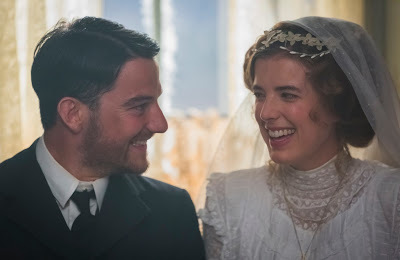 Life with loving husband Ewan Tavendale (Kevin Guthrie, left) brings great joy to farm girl Chris Guthrie (Agyness Deyn, right) in the beautiful, moving drama, “Sunset Song,” available on DVD, Blu-ray Disk and video on demand. Photo courtesy of Magnolia Pictures.
Life with loving husband Ewan Tavendale (Kevin Guthrie, left) brings great joy to farm girl Chris Guthrie (Agyness Deyn, right) in the beautiful, moving drama, “Sunset Song,” available on DVD, Blu-ray Disk and video on demand. Photo courtesy of Magnolia Pictures.
Those longing to see the beauty of Scotland will love the positively gorgeous cinematography of “Sunset Song.” Its performances and period piece production values weave together a beautiful and moving cinematic tapestry, with rich character development and a genuine feel for the era depicted. The film is, admittedly, a bit slow-paced and somewhat episodic at times, and it readily recalls themes found in other, more familiar pictures, such as “Far from the Madding Crowd” (2015) and, to a certain extent, “Ryan’s Daughter” (1970). Nevertheless, director Terence Davies’ offering makes a fine viewing choice for one of those windswept fall afternoons when staying in and watching a movie in the comfort of a warm living room seems like the perfect way the spend the day.
The next time you’re ready to fly the white flag, think of the inspiration provided by the example set in this film. You just might find yourself willing to hang in far longer than you thought possible.
Copyright © 2016, by Brent Marchant. All rights reserved.
Making one’s way in the world can be difficult enough, even under the best of circumstances. But, when conditions offer repeated challenges, the chances of success can become that much more difficult, as evidenced by the experiences of a young Scottish farm girl in the days before World War I, the subject of the moving drama, “Sunset Song,” now available on DVD, Blu-ray Disk and video on demand.
Chris Guthrie (Agyness Deyn) lives a rather hard life in rural Scotland. She aspires to be a teacher, but she’s perpetually saddled with the responsibilities of the family farm, especially after the death of her mother (Daniela Nardini), the departure of her siblings, including her beloved brother, Will (Jack Greenlees), and the overbearing demands of her authoritarian father, John (Peter Mullan). Even when she manages to find some peace of mind and happiness with her handsome, loving new husband, Ewan Tavendale (Kevin Guthrie), her contentment is interrupted by the onset of the Great War, a conflict far removed from her world but whose impact on her life is undeniable.
 Tending a farm in rural Scotland provides many challenges for Chris Guthrie (Agyness Deyn) in the beautiful, moving drama, “Sunset Song,” available on DVD, Blu-ray Disk and video on demand. Photo courtesy of Magnolia Pictures.
Tending a farm in rural Scotland provides many challenges for Chris Guthrie (Agyness Deyn) in the beautiful, moving drama, “Sunset Song,” available on DVD, Blu-ray Disk and video on demand. Photo courtesy of Magnolia Pictures.It would be easy to give up under such trying circumstances, but Chris is not deterred. She carries on, hoping for a breakthrough that will ultimately lead to the satisfaction and fulfillment she longs for. That means hanging in through the challenges, but, trite though it may be, as the time-honored saying goes, that which does not kill us only makes us stronger. And Chris can certainly attest to that.
Those of weaker conviction probably would have given up early on, but not Chris. She’s determined to see things through because she believes she can. The strength of those beliefs is important, too, especially for those of us committed to practicing conscious creation, the means by which we manifest the reality we experience through the power of our thoughts, beliefs and intents. And in Chris’s case, she has vast reserves to draw upon.
To make the process work, there are certain conscious creation skills that Chris must bring to the table. For starters, she must – and successfully does – rid herself of conflicting convictions that might undercut her materialization efforts. Most notably, she effectively faces down her fears, keeping them from infringing on what she seeks to manifest. In a similar vein, she does the same when it comes to doubt, preventing it from creeping into her intents. That’s important, because beliefs associated with fear and doubt can summarily negate our creative efforts, canceling out our attempts at realizing certain outcomes, no matter how strongly we envision and believe in them. Thankfully, for her sake, Chris has managed to vanquish these demons.
Another reason Chris is so successful is that she keeps an open mind when it comes to her circumstances. As someone who has long possessed a strong interest in education, she has always remained open to the exploration of new ideas (even though that was something not especially expected of women of her era). Because of that, she’s willing to look past limitations to come up with innovative solutions to her various dilemmas, true tests of her conscious creation skills that enable her to stretch her manifestation abilities. She thus sets an example in this regard that we could all learn from in addressing the thorny issues that arise in our existence.
To a great degree, Chis is able to accomplish all this thanks to her strong sense of personal integrity. When conditions challenge her, she never shies away from speaking her mind and making her feelings known, a trait that runs through her belief formation process as well. That serves her effectively, too, since she – like all of us – tends to get the most fulfilling results from her beliefs by following such a course. The fidelity of her manifestations is a direct reflection of the beliefs that drive them, and Chris manages to bring truth to what she creates.
In many ways, these principles might seem like common sense. Yet it’s amazing how often we fall short of the mark in creating what we seek. By allowing the foregoing to become diluted or tainted by conflicts, contradictions or a lack of truthfulness, we can get off track, leading to disappointments and frustrations. But, by following Chris’s lead, we can avoid many of these issues and realize what we most hope for.
 Life with loving husband Ewan Tavendale (Kevin Guthrie, left) brings great joy to farm girl Chris Guthrie (Agyness Deyn, right) in the beautiful, moving drama, “Sunset Song,” available on DVD, Blu-ray Disk and video on demand. Photo courtesy of Magnolia Pictures.
Life with loving husband Ewan Tavendale (Kevin Guthrie, left) brings great joy to farm girl Chris Guthrie (Agyness Deyn, right) in the beautiful, moving drama, “Sunset Song,” available on DVD, Blu-ray Disk and video on demand. Photo courtesy of Magnolia Pictures.Those longing to see the beauty of Scotland will love the positively gorgeous cinematography of “Sunset Song.” Its performances and period piece production values weave together a beautiful and moving cinematic tapestry, with rich character development and a genuine feel for the era depicted. The film is, admittedly, a bit slow-paced and somewhat episodic at times, and it readily recalls themes found in other, more familiar pictures, such as “Far from the Madding Crowd” (2015) and, to a certain extent, “Ryan’s Daughter” (1970). Nevertheless, director Terence Davies’ offering makes a fine viewing choice for one of those windswept fall afternoons when staying in and watching a movie in the comfort of a warm living room seems like the perfect way the spend the day.
The next time you’re ready to fly the white flag, think of the inspiration provided by the example set in this film. You just might find yourself willing to hang in far longer than you thought possible.
Copyright © 2016, by Brent Marchant. All rights reserved.
Published on September 25, 2016 14:39
September 23, 2016
‘Snowden’ explores the integrity of heroism
“Snowden” (2016). Cast: Joseph Gordon-Levitt, Shailene Woodley, Melissa Leo, Zachary Quinto, Tom Wilkinson, Nicolas Cage, Rhys Ifans, Ben Chaplin, Joely Richardson, Ben Schnetzer, Scott Eastwood, Lakeith Lee Stanfield, Patrick Joseph Byrnes, Timothy Olyphant, Bhasker Patel, Edward Snowden. Director: Oliver Stone. Screenplay: Kieran Fitzgerald and Oliver Stone. Books: Anatoly Kucherena, Time of the Octopus, and Luke Harding, The Snowden Files. Web site. Trailer.
Heroes come in many forms. Some are obvious by their acts and deeds. Others are less apparent, working quietly behind the scenes to effect meaningful change. And others still may take drastic measures that leave them unappreciated for their efforts, perhaps even being vilified as criminals, agitators or traitors by members of officialdom. Those who fall into this last category often don’t receive the recognition they deserve until well after the fact, despite their rigorous adherence to a strong sense of personal integrity (consider the case of Dr. Martin Luther King Jr., for example). But, in today’s fast-moving media age, it’s now possible to get the word out about someone’s heroic efforts quickly and widely, achievements portrayed in the revealing new biopic, “Snowden.”
In 2013, former CIA and NSA intelligence contractor Edward Snowden (Joseph Gordon-Levitt) stunned the world with his revelation of covert government operations aimed at collecting massive amounts of phone and Internet data from American citizens. This unprecedented aggregation of information was said to be essential for the US government’s intelligence operations in combating the war on terror. But was such an invasion of personal privacy truly necessary – or legal?
Fleeing from the US to Hong Kong, Snowden met secretly with filmmaker Laura Poitras (Melissa Leo) and reporters Glenn Greenwald (Zachary Quinto) and Ewen MacAskill (Tom Wilkinson) to divulge what he knew. This collaboration led to a series of explosive newspaper articles and the documentary “Citizen Four” (2014), all of which set off a media firestorm that made headlines around the globe.
For his efforts, Snowden was labeled a hero by some and a traitor by others. So why did he do it? That’s what this film is all about. Through a series of flashbacks beginning in 2004, viewers learn Snowden’s personal and professional history, first as an aspiring special forces soldier sidelined by injuries and later as a budding CIA operative under the mentoring of agency instructors Corbin O’Brian (Rhys Ifans) and Hank Forrester (Nicolas Cage). Snowden’s interest in such undertakings stemmed from the outrage he felt after the 9/11 attacks. As an avowed patriot, not to mention a computer genius, he wanted to give something back to his country. And, even though he didn’t quite fit the profile of a typical intelligence operative recruit, the powers that be recognized his talents, bringing him aboard without hesitation.
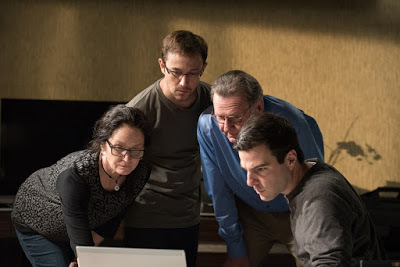 Whistleblower Edward Snowden (Joseph Gordon-Levitt, second from left) consults with documentary filmmaker Laura Poitras (Melissa Leo, left) and reporters Ewen MacAskill (Tom Wilkinson, second from right) and Glenn Greenwald (Zachary Quinto, right) in revealing explosive government secrets in director Oliver Stone’s new biopic, “Snowden.” Photo by Jürgen Olczyk, courtesy of Open Road Films.
Whistleblower Edward Snowden (Joseph Gordon-Levitt, second from left) consults with documentary filmmaker Laura Poitras (Melissa Leo, left) and reporters Ewen MacAskill (Tom Wilkinson, second from right) and Glenn Greenwald (Zachary Quinto, right) in revealing explosive government secrets in director Oliver Stone’s new biopic, “Snowden.” Photo by Jürgen Olczyk, courtesy of Open Road Films.
Upon the completion of his training, Snowden was placed to postings in Geneva and Japan with the CIA and NSA. However, the more involved he became in these operations, the more disenchanted he became. When he saw the true nature of some of the US government’s initiatives, he grew increasingly uneasy about his participation in them, especially when he learned that the agencies’ spying efforts entailed surveillance of not only foreign elements, but also a massive number of domestic parties.
The stress of this internal conflict took its toll on the idealistic young operative. Snowden began to question his beliefs, growing increasingly skeptical about the government and his personal convictions in supporting it. These circumstances also strained his relationship with his girlfriend, Lindsay (Shailene Woodley), and affected his health. Clearly, something would have to give. And so, while serving in a new post in Hawaii, he decided to take action, a bold move with the potential to blow the lid off everything – and that could potentially cost him everything.
Snowden’s odyssey is indeed an intriguing one. He firmly believed in doing his patriotic duty and sought the means to carry it out. It’s quite ironic, though, that he would end up engaging in acts that some would say embodied the antithesis of patriotism. Yet he ultimately did so in the name of that very concept, one that he believed his own government had turned its back on.
Given the foregoing, it’s obvious Snowden’s actions are inextricably tied up in his beliefs, convictions he held quite dearly. It should thus come as no surprise that events naturally unfolded directly in line with those notions, a cornerstone principle of the conscious creation process, the means by which we manifest the reality we experience through the power of our thoughts, beliefs and intents. And, with beliefs as clear and potent as Snowden’s, those convictions packed quite a powerful punch once they materialized.
Interestingly, even though Snowden believed strongly in carrying out his patriotic duty, it took him some time to find the means that expressed this idea with the greatest impact. He initially believed he could do the most good by exploring conventional channels, such as becoming a special forces soldier or working inside the intelligence community. But, when it came to his military experience, he wasn’t up to the challenge physically. And, when he pursued a career in intelligence, he became disillusioned when he found that his idealistic concepts of patriotism didn’t match the often-cynical, self-serving motives of officialdom. Snowden ultimately found his calling by following a very different path, one that deviated significantly from what he initially believed he would end up doing but that had impact far more sweeping than anything else he could have accomplished through more traditional milieus.
In conscious creation terms, some might call this an act of semi-conscious creation, one that’s sometimes fraught with unforeseen perils, particularly failing to recognize the attainment of our goals when we achieve them or being confused that our creations take forms different from what we initially envisioned for them. Snowden sought the fulfillment of his patriotic duty, though he probably never thought he would accomplish this objective by such unconventional and seemingly counterintuitive measures. His actions weren’t what he had in mind when he started out, yet they ended up fulfilling the same purpose in the end. In that sense, then, his experience serves to remind us that, when we engage in acts of conscious creation, we must take care not to confuse form with substance; we may well arrive at our goal, even if it’s dressed up in a different set of clothes from what he had anticipated.
Snowden was able to accomplish his goal by adhering to several key conscious creation concepts. Most notably, he abided by a strong sense of personal integrity, remaining true to himself, his beliefs and his actions. As conscious creators are well aware, we tend to achieve the most fulfilling and authentic results when we’re true to ourselves. By forming and adhering to beliefs genuinely in line with our basic nature, we realize outcomes reflective of those notions, and they’re often among the most powerful and impactful manifestations we can materialize.
To proceed in this vein, though, Snowden was not without challenges, particularly those that threatened his career, his freedom and even his personal safety. Yet, to see his goals realized, he routinely had to rise above these circumstances, facing his fears and living heroically. This often proved difficult, but Snowden was determined to see his mission through, always finding ways to circumvent the challenges put before him to achieve his objectives. This is where the power of beliefs once again comes into play; by holding fast to the fulfillment of his convictions, he also managed to manifest the solutions necessary to successfully surmount whatever obstacles crossed his path.
 Whistleblower Edward Snowden (Joseph Gordon-Levitt, left) struggles to maintain his relationship with his longtime girlfriend, Lindsay (Shailene Woodley, right), under trying circumstances in director Oliver Stone’s new biopic, “Snowden.” Photo by William Gray, courtesy of Open Road Films.
Whistleblower Edward Snowden (Joseph Gordon-Levitt, left) struggles to maintain his relationship with his longtime girlfriend, Lindsay (Shailene Woodley, right), under trying circumstances in director Oliver Stone’s new biopic, “Snowden.” Photo by William Gray, courtesy of Open Road Films.
In the end, all of these efforts represented examples of Snowden’s value fulfillment, the conscious creation concept associated with living our lives as our best, truest selves for our own benefit and that of others. He alerted the world to troubling initiatives known by few outside the intelligence community. Insiders whose efforts he challenged may not have appreciated his actions, but, for those on the outside – and who were most directly affected by such undertakings – Snowden managed to shine a bright light on a slew of highly questionable activities. In doing so, he lived out (and continues to live out) his value fulfillment, giving further credence to the words of famed journalist Edward R. Murrow, who boldly proclaimed during his coverage critical of the McCarthy anti-American hearings of the 1950s, “We must not confuse dissent with disloyalty.”
Snowden is seen by many as a controversial figure, and those whose feathers he’s ruffled obviously hold a different opinion of him than what’s depicted here. However, over time, I suspect that his actions will be vindicated, that his daring acts will truly be seen for the heroic, patriotic aims that they were intended to fulfill. As noted earlier, we must not confuse form with substance, and that’s just as true here as it is in virtually any other conscious creation undertaking.
Though sometimes flat in its tone and drawn out in its pacing, “Snowden” is nevertheless an important piece of cinema that does an excellent job of detailing what happened and explaining the implications of the protagonist’s actions. Gordon-Levitt turns in an excellent performance in capturing Snowden’s soft-spoken but intense demeanor and distinctive vocal inflections, and he’s backed by an excellent supporting cast across the board. This may not be director Oliver Stone’s best cinematic effort, but it’s arguably one of his most significant productions. What’s more, this biopic, though a somewhat fictionalized account, ranks far superior to its documentary predecessor, which, commendably, captured history as it happened but became so bogged down in cyber jargon that its impact was lost on virtually anyone not fluent in tech-speak.
Taking a heroic stand requires remarkable courage and personal fortitude. Those are qualities Snowden demonstrated repeatedly throughout his career, and, when faced with conditions he could no longer sanction, he felt compelled to make them known to the world. He informed the public of secrets that likely never would have seen the light of day. What’s more, he inspired other whistleblowers to come forward to make injustices known. Indeed, if anyone wonders what it means to be a hero, particularly in the face of overwhelmingly oppressive scrutiny, Snowden wears the mantle well. Stepping up to the plate under trying conditions truly requires heroic efforts. And, for his part, Snowden shows us how.
Copyright © 2016, by Brent Marchant. All rights reserved.
Heroes come in many forms. Some are obvious by their acts and deeds. Others are less apparent, working quietly behind the scenes to effect meaningful change. And others still may take drastic measures that leave them unappreciated for their efforts, perhaps even being vilified as criminals, agitators or traitors by members of officialdom. Those who fall into this last category often don’t receive the recognition they deserve until well after the fact, despite their rigorous adherence to a strong sense of personal integrity (consider the case of Dr. Martin Luther King Jr., for example). But, in today’s fast-moving media age, it’s now possible to get the word out about someone’s heroic efforts quickly and widely, achievements portrayed in the revealing new biopic, “Snowden.”
In 2013, former CIA and NSA intelligence contractor Edward Snowden (Joseph Gordon-Levitt) stunned the world with his revelation of covert government operations aimed at collecting massive amounts of phone and Internet data from American citizens. This unprecedented aggregation of information was said to be essential for the US government’s intelligence operations in combating the war on terror. But was such an invasion of personal privacy truly necessary – or legal?
Fleeing from the US to Hong Kong, Snowden met secretly with filmmaker Laura Poitras (Melissa Leo) and reporters Glenn Greenwald (Zachary Quinto) and Ewen MacAskill (Tom Wilkinson) to divulge what he knew. This collaboration led to a series of explosive newspaper articles and the documentary “Citizen Four” (2014), all of which set off a media firestorm that made headlines around the globe.
For his efforts, Snowden was labeled a hero by some and a traitor by others. So why did he do it? That’s what this film is all about. Through a series of flashbacks beginning in 2004, viewers learn Snowden’s personal and professional history, first as an aspiring special forces soldier sidelined by injuries and later as a budding CIA operative under the mentoring of agency instructors Corbin O’Brian (Rhys Ifans) and Hank Forrester (Nicolas Cage). Snowden’s interest in such undertakings stemmed from the outrage he felt after the 9/11 attacks. As an avowed patriot, not to mention a computer genius, he wanted to give something back to his country. And, even though he didn’t quite fit the profile of a typical intelligence operative recruit, the powers that be recognized his talents, bringing him aboard without hesitation.
 Whistleblower Edward Snowden (Joseph Gordon-Levitt, second from left) consults with documentary filmmaker Laura Poitras (Melissa Leo, left) and reporters Ewen MacAskill (Tom Wilkinson, second from right) and Glenn Greenwald (Zachary Quinto, right) in revealing explosive government secrets in director Oliver Stone’s new biopic, “Snowden.” Photo by Jürgen Olczyk, courtesy of Open Road Films.
Whistleblower Edward Snowden (Joseph Gordon-Levitt, second from left) consults with documentary filmmaker Laura Poitras (Melissa Leo, left) and reporters Ewen MacAskill (Tom Wilkinson, second from right) and Glenn Greenwald (Zachary Quinto, right) in revealing explosive government secrets in director Oliver Stone’s new biopic, “Snowden.” Photo by Jürgen Olczyk, courtesy of Open Road Films.Upon the completion of his training, Snowden was placed to postings in Geneva and Japan with the CIA and NSA. However, the more involved he became in these operations, the more disenchanted he became. When he saw the true nature of some of the US government’s initiatives, he grew increasingly uneasy about his participation in them, especially when he learned that the agencies’ spying efforts entailed surveillance of not only foreign elements, but also a massive number of domestic parties.
The stress of this internal conflict took its toll on the idealistic young operative. Snowden began to question his beliefs, growing increasingly skeptical about the government and his personal convictions in supporting it. These circumstances also strained his relationship with his girlfriend, Lindsay (Shailene Woodley), and affected his health. Clearly, something would have to give. And so, while serving in a new post in Hawaii, he decided to take action, a bold move with the potential to blow the lid off everything – and that could potentially cost him everything.
Snowden’s odyssey is indeed an intriguing one. He firmly believed in doing his patriotic duty and sought the means to carry it out. It’s quite ironic, though, that he would end up engaging in acts that some would say embodied the antithesis of patriotism. Yet he ultimately did so in the name of that very concept, one that he believed his own government had turned its back on.
Given the foregoing, it’s obvious Snowden’s actions are inextricably tied up in his beliefs, convictions he held quite dearly. It should thus come as no surprise that events naturally unfolded directly in line with those notions, a cornerstone principle of the conscious creation process, the means by which we manifest the reality we experience through the power of our thoughts, beliefs and intents. And, with beliefs as clear and potent as Snowden’s, those convictions packed quite a powerful punch once they materialized.
Interestingly, even though Snowden believed strongly in carrying out his patriotic duty, it took him some time to find the means that expressed this idea with the greatest impact. He initially believed he could do the most good by exploring conventional channels, such as becoming a special forces soldier or working inside the intelligence community. But, when it came to his military experience, he wasn’t up to the challenge physically. And, when he pursued a career in intelligence, he became disillusioned when he found that his idealistic concepts of patriotism didn’t match the often-cynical, self-serving motives of officialdom. Snowden ultimately found his calling by following a very different path, one that deviated significantly from what he initially believed he would end up doing but that had impact far more sweeping than anything else he could have accomplished through more traditional milieus.
In conscious creation terms, some might call this an act of semi-conscious creation, one that’s sometimes fraught with unforeseen perils, particularly failing to recognize the attainment of our goals when we achieve them or being confused that our creations take forms different from what we initially envisioned for them. Snowden sought the fulfillment of his patriotic duty, though he probably never thought he would accomplish this objective by such unconventional and seemingly counterintuitive measures. His actions weren’t what he had in mind when he started out, yet they ended up fulfilling the same purpose in the end. In that sense, then, his experience serves to remind us that, when we engage in acts of conscious creation, we must take care not to confuse form with substance; we may well arrive at our goal, even if it’s dressed up in a different set of clothes from what he had anticipated.
Snowden was able to accomplish his goal by adhering to several key conscious creation concepts. Most notably, he abided by a strong sense of personal integrity, remaining true to himself, his beliefs and his actions. As conscious creators are well aware, we tend to achieve the most fulfilling and authentic results when we’re true to ourselves. By forming and adhering to beliefs genuinely in line with our basic nature, we realize outcomes reflective of those notions, and they’re often among the most powerful and impactful manifestations we can materialize.
To proceed in this vein, though, Snowden was not without challenges, particularly those that threatened his career, his freedom and even his personal safety. Yet, to see his goals realized, he routinely had to rise above these circumstances, facing his fears and living heroically. This often proved difficult, but Snowden was determined to see his mission through, always finding ways to circumvent the challenges put before him to achieve his objectives. This is where the power of beliefs once again comes into play; by holding fast to the fulfillment of his convictions, he also managed to manifest the solutions necessary to successfully surmount whatever obstacles crossed his path.
 Whistleblower Edward Snowden (Joseph Gordon-Levitt, left) struggles to maintain his relationship with his longtime girlfriend, Lindsay (Shailene Woodley, right), under trying circumstances in director Oliver Stone’s new biopic, “Snowden.” Photo by William Gray, courtesy of Open Road Films.
Whistleblower Edward Snowden (Joseph Gordon-Levitt, left) struggles to maintain his relationship with his longtime girlfriend, Lindsay (Shailene Woodley, right), under trying circumstances in director Oliver Stone’s new biopic, “Snowden.” Photo by William Gray, courtesy of Open Road Films.In the end, all of these efforts represented examples of Snowden’s value fulfillment, the conscious creation concept associated with living our lives as our best, truest selves for our own benefit and that of others. He alerted the world to troubling initiatives known by few outside the intelligence community. Insiders whose efforts he challenged may not have appreciated his actions, but, for those on the outside – and who were most directly affected by such undertakings – Snowden managed to shine a bright light on a slew of highly questionable activities. In doing so, he lived out (and continues to live out) his value fulfillment, giving further credence to the words of famed journalist Edward R. Murrow, who boldly proclaimed during his coverage critical of the McCarthy anti-American hearings of the 1950s, “We must not confuse dissent with disloyalty.”
Snowden is seen by many as a controversial figure, and those whose feathers he’s ruffled obviously hold a different opinion of him than what’s depicted here. However, over time, I suspect that his actions will be vindicated, that his daring acts will truly be seen for the heroic, patriotic aims that they were intended to fulfill. As noted earlier, we must not confuse form with substance, and that’s just as true here as it is in virtually any other conscious creation undertaking.
Though sometimes flat in its tone and drawn out in its pacing, “Snowden” is nevertheless an important piece of cinema that does an excellent job of detailing what happened and explaining the implications of the protagonist’s actions. Gordon-Levitt turns in an excellent performance in capturing Snowden’s soft-spoken but intense demeanor and distinctive vocal inflections, and he’s backed by an excellent supporting cast across the board. This may not be director Oliver Stone’s best cinematic effort, but it’s arguably one of his most significant productions. What’s more, this biopic, though a somewhat fictionalized account, ranks far superior to its documentary predecessor, which, commendably, captured history as it happened but became so bogged down in cyber jargon that its impact was lost on virtually anyone not fluent in tech-speak.
Taking a heroic stand requires remarkable courage and personal fortitude. Those are qualities Snowden demonstrated repeatedly throughout his career, and, when faced with conditions he could no longer sanction, he felt compelled to make them known to the world. He informed the public of secrets that likely never would have seen the light of day. What’s more, he inspired other whistleblowers to come forward to make injustices known. Indeed, if anyone wonders what it means to be a hero, particularly in the face of overwhelmingly oppressive scrutiny, Snowden wears the mantle well. Stepping up to the plate under trying conditions truly requires heroic efforts. And, for his part, Snowden shows us how.
Copyright © 2016, by Brent Marchant. All rights reserved.
Published on September 23, 2016 15:59
September 20, 2016
Tune in to Reviewers Roundtable!
Join me and fellow reviewers Miriam Knight and Cynthia Sue Larson this Wednesday, September 21, when we’ll get together to discuss some of the latest book and movie releases on the quarterly Reviewers Roundtable broadcast of New Consciousness Review radio. Tune in at 2 pm ET by clicking here. Join us for some lively chat!


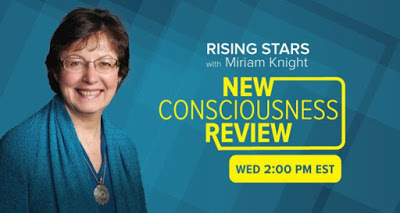



Published on September 20, 2016 04:35
September 19, 2016
This Week in Movies with Meaning
Reviews of "Snowden" and "The Beatles: Eight Days a Week -- The Touring Years" and a radio show preview are all in the latest Movies with Meaning post on the Blog Page of The Good Radio Network, available by clicking here.

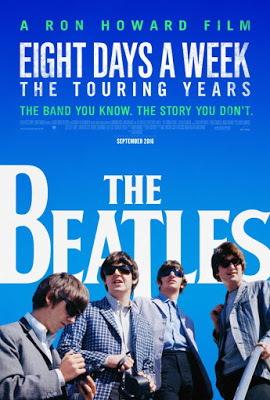
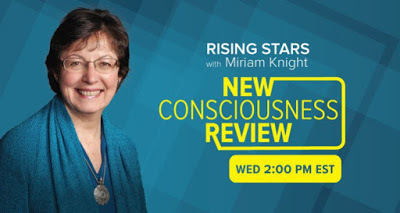





Published on September 19, 2016 04:04
September 14, 2016
‘Sully’ wrestles with the meaning of ‘hero’
“Sully” (2016). Cast: Tom Hanks, Aaron Eckhart, Laura Linney, Jamey Sheridan, Anna Gunn, Mike O’Malley, Katie Couric, Valerie Mahaffey, Blake Jones, Sam Huntington, Christopher Curry, Max Adler. Director: Clint Eastwood. Screenplay: Todd Komarnicki. Book: Chesley “Sully” Sullenberger and Jeffrey Zaslow, Highest Duty. Web site. Trailer.
What makes a hero? Is it someone who performs extraordinarily beneficial acts? Or can it be someone who believes he or she is just doing his or her job? But what if it could be both? Those are among the issues posed in the new fact-based saga, “Sully.”
In January 2009, the world was in awe of an event that came to be known as “the Miracle on the Hudson,” a successful water landing of a US Airways jet liner on New York’s Hudson River after both of its engines were rendered inoperative by a bird strike. The unprecedented damage to the aircraft prevented a landing at any of the New York area airports, forcing Capt. Chesley “Sully” Sullenberger (Tom Hanks) and his first officer, Jeff Skiles (Aaron Eckhart), to take drastic measures. Given the history of water landings, the prospects weren’t promising. But, thanks to the crew’s efforts, the plane landed successfully – and everyone survived. What’s more, everyone was successfully evacuated and safely ashore in a scant 24 minutes.
In the wake of the incident, Sully was publicly hailed as a hero. But, behind the scenes, the pilot’s actions were questioned by investigators (Jamey Sheridan, Anna Gunn, Mike O’Malley) from the National Transportation Safety Board, who claimed that computer simulations showed the plane could have been successfully flown back to its departure point, New York’s LaGuardia Airport. Sully contended that simulations don’t tell the entire story, but the investigators maintained otherwise, prompting the captain to second-guess what he did.
Meanwhile, the mild-mannered pilot was far from accustomed to all of the attention he was receiving from the media, including an interview with Katie Couric and an appearance on The Late Show with David Letterman. He was even approached by multitudes of everyday citizens, who unreservedly expressed their congratulations and gratitude, regardless of whether they had any connections to the flight or any of its passengers. Sully believed he was just doing his job, but now he had become a national folk hero – one who had to wrestle with that label in the wake of the scrutiny he was under from government officials, as well as the generous public praise he received from virtually everyone else.
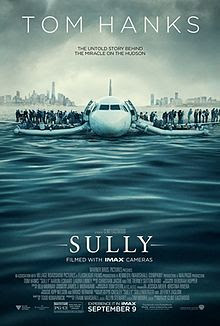
It seems everyone loves a hero, and those fans are eager to show their affection and appreciation. But what does it mean for the person who is the object of such adulation? Many of us would probably think such praise would be warmly welcomed, but is that truly the case? Consider the case of someone as unassuming as Sully, who was more concerned with doing his job and ensuring the safety of his passengers than becoming preoccupied with whatever recognition would come from it. That’s a real hero, and this film celebrates that fact, not only in the wake of what happened, but also in light of what he was subjected to in the incident’s aftermath.
In doing that job, Sully had to make some difficult decisions about how to proceed. What would bring the optimal result for all concerned? That involved some critical choices, considering the difficulty of the circumstances involved. But, thankfully, that’s where Sully’s acute conscious creation skills – the means by which we manifest the reality we experience through the power of our thoughts, beliefs and intents – came into play.
The bird strike caused unprecedented damage to the Airbus A320 jet liner, an aircraft well known for its reliability. That placed Sully in a situation requiring an unprecedented solution. But, from a conscious creation standpoint, how does one realize such a result?
Several key components factor into devising such an outcome. First, unparalleled circumstances call for thinking outside the box, pushing past preconceived limitations and envisioning a result never before tried. This was particularly crucial in this situation given the time frame involved: With the plane at relatively low altitude and no engine power available, Sully needed to act quickly to avoid a catastrophe. That meant calling upon all of his creative resources to come up with beliefs that would support a favorable resolution.
To accomplish this, Sully needed to draw upon both the power of his intellect and intuition, the chief sources of input that lead to the formation of our manifesting beliefs. Most of us don’t have a problem tapping into our intellect, since it tends to be the primary standpoint from which we view the world (and subsequently create it). In Sully’s case, this involved using his vast knowledge of aeronautics and his extensive aviation experience (something depicted through flashbacks to his prior flying adventures). Such knowledge factored heavily in the intellectual input driving his beliefs.
But Sully needed more than just “facts” and experience to see him through this scenario. Since he had to get creative in his approach to resolving the situation, he also had to employ his intuition, his gut feelings, about how to proceed. For many of us, this is often a tricky proposition, since we tend not to trust what our intuition has to say, its impressions frequently coming across as illogical, irrational and, hence, untrustworthy. Nevertheless, considering what he was up against, Sully had to rely on it in formulating a workable plan, no matter how outlandish it might seem on the surface.
In settling on the decision to try something as risky as a water landing, Sully needed to draw upon another key conscious creation concept – moving past his fears in attempting the untried act of touching down on the surface of the Hudson. Such a bold, courageous move meant that he truly had to live like a hero – and to believe that he could. There was no room for doubt or fear to undercut his resolve if he were to achieve the outcome he sought.
Such self-certainty also required that Sully have faith in his abilities to accurately assess the circumstances at hand and to properly execute the proposed task. That, again, required an unshakable confidence in himself and his abilities, free of the fear and doubt that might derail his efforts.
Considering the results, it’s apparent that, from a conscious creation perspective, Sully indeed had what it took to see his plans successfully realized. Ironically, it wasn’t until after the fact that he started second-guessing himself, when he began allowing the contentions of others to influence his thinking. This secondary challenge in many ways proved to be more of a threat to Sully (and the beliefs that drove his previous actions) than the circumstances that prompted him to behave as he did in the first place. This new situation thus called for Sully to galvanize himself in his beliefs, necessitating him to tap the same conscious creation resources that got him successfully through his first ordeal. Thankfully, though, he had the experience of his first challenge to draw upon in coming up with the appropriate thoughts, beliefs and intents necessary to surmount this latest test.
In addition, in getting through these challenges, Sully was fortunate to have the backing of his fellow co-creators to help see him through. Even though most everyone was heaping praise on Sully for a successful outcome, he was quick to point out that he could not have attained that result were it not for the support and assistance provided him by so many others, including the flight crew, the passengers, the first responders and the air traffic control personnel. Sully insisted that their input in the manifestation of this outcome was essential, and he never shied away from sharing the credit with them. But, then, that’s all part of what goes into the materialization of a successful co-creation.
For their part, the investigators played a role in this scenario as well. By challenging Sully, they helped him to reaffirm for himself what he knew in his heart to be true – that he pursued the proper course of action based on what his intellect and intuition told him to believe and subsequently do (anyone who doubts that need only look to the results he attained, which clearly speak for themselves). And, because of this, Sully was thus able to validate his personal sense of integrity, a crucial element in how he (or anyone else, for that matter) conducts himself when engaged in acts of conscious creation. By being true to ourselves, we’re able to see satisfying outcomes come to life.
The Miracle on the Hudson was a truly remarkable achievement, one that could have easily become a major catastrophe if it had been driven by a different set of underlying beliefs (particularly those undermined by doubt and fear). However, with those obstacles excluded from the mix and a sense of heroism firmly entrenched, a miracle occurred. But, then, as ardent conscious creators are well aware, miracles are, in actuality, nothing more than nature unimpeded.
“Sully” provides a captivating look at the back story of an astounding, heroic event that hasn’t received much, if any, attention until now. Fine performances and excellent special effects (especially the re-created water landing sequences) make for a surprisingly good film, one that I must admit proved better than I expected. Even though some aspects of the story are said to be somewhat overblown (such as the contentiousness of the NTSB investigation), director Clint Eastwood has nevertheless served up an excellent film here, one that provides an encouraging start to this year’s movie awards season.
The hero’s journey can be a difficult one, not only during the events that prompt the emergence of such a label, but also in its aftermath. Virtually anyone who has successfully weathered a harrowing experience can attest to this, too, particularly when the realization of what could have happened sets in, leaving survivors awestruck, perhaps even overwhelmed, by what actually occurred in the wake of those unnerving circumstances. Nevertheless, such outcomes ultimately remind us of the awesome power of what’s made possible by our beliefs and the conscious creation process, results that we should always appreciate and never take for granted, for doing otherwise might well yield a very different result the next time around.
Copyright © 2016, by Brent Marchant. All rights reserved.
What makes a hero? Is it someone who performs extraordinarily beneficial acts? Or can it be someone who believes he or she is just doing his or her job? But what if it could be both? Those are among the issues posed in the new fact-based saga, “Sully.”
In January 2009, the world was in awe of an event that came to be known as “the Miracle on the Hudson,” a successful water landing of a US Airways jet liner on New York’s Hudson River after both of its engines were rendered inoperative by a bird strike. The unprecedented damage to the aircraft prevented a landing at any of the New York area airports, forcing Capt. Chesley “Sully” Sullenberger (Tom Hanks) and his first officer, Jeff Skiles (Aaron Eckhart), to take drastic measures. Given the history of water landings, the prospects weren’t promising. But, thanks to the crew’s efforts, the plane landed successfully – and everyone survived. What’s more, everyone was successfully evacuated and safely ashore in a scant 24 minutes.
In the wake of the incident, Sully was publicly hailed as a hero. But, behind the scenes, the pilot’s actions were questioned by investigators (Jamey Sheridan, Anna Gunn, Mike O’Malley) from the National Transportation Safety Board, who claimed that computer simulations showed the plane could have been successfully flown back to its departure point, New York’s LaGuardia Airport. Sully contended that simulations don’t tell the entire story, but the investigators maintained otherwise, prompting the captain to second-guess what he did.
Meanwhile, the mild-mannered pilot was far from accustomed to all of the attention he was receiving from the media, including an interview with Katie Couric and an appearance on The Late Show with David Letterman. He was even approached by multitudes of everyday citizens, who unreservedly expressed their congratulations and gratitude, regardless of whether they had any connections to the flight or any of its passengers. Sully believed he was just doing his job, but now he had become a national folk hero – one who had to wrestle with that label in the wake of the scrutiny he was under from government officials, as well as the generous public praise he received from virtually everyone else.

It seems everyone loves a hero, and those fans are eager to show their affection and appreciation. But what does it mean for the person who is the object of such adulation? Many of us would probably think such praise would be warmly welcomed, but is that truly the case? Consider the case of someone as unassuming as Sully, who was more concerned with doing his job and ensuring the safety of his passengers than becoming preoccupied with whatever recognition would come from it. That’s a real hero, and this film celebrates that fact, not only in the wake of what happened, but also in light of what he was subjected to in the incident’s aftermath.
In doing that job, Sully had to make some difficult decisions about how to proceed. What would bring the optimal result for all concerned? That involved some critical choices, considering the difficulty of the circumstances involved. But, thankfully, that’s where Sully’s acute conscious creation skills – the means by which we manifest the reality we experience through the power of our thoughts, beliefs and intents – came into play.
The bird strike caused unprecedented damage to the Airbus A320 jet liner, an aircraft well known for its reliability. That placed Sully in a situation requiring an unprecedented solution. But, from a conscious creation standpoint, how does one realize such a result?
Several key components factor into devising such an outcome. First, unparalleled circumstances call for thinking outside the box, pushing past preconceived limitations and envisioning a result never before tried. This was particularly crucial in this situation given the time frame involved: With the plane at relatively low altitude and no engine power available, Sully needed to act quickly to avoid a catastrophe. That meant calling upon all of his creative resources to come up with beliefs that would support a favorable resolution.
To accomplish this, Sully needed to draw upon both the power of his intellect and intuition, the chief sources of input that lead to the formation of our manifesting beliefs. Most of us don’t have a problem tapping into our intellect, since it tends to be the primary standpoint from which we view the world (and subsequently create it). In Sully’s case, this involved using his vast knowledge of aeronautics and his extensive aviation experience (something depicted through flashbacks to his prior flying adventures). Such knowledge factored heavily in the intellectual input driving his beliefs.
But Sully needed more than just “facts” and experience to see him through this scenario. Since he had to get creative in his approach to resolving the situation, he also had to employ his intuition, his gut feelings, about how to proceed. For many of us, this is often a tricky proposition, since we tend not to trust what our intuition has to say, its impressions frequently coming across as illogical, irrational and, hence, untrustworthy. Nevertheless, considering what he was up against, Sully had to rely on it in formulating a workable plan, no matter how outlandish it might seem on the surface.
In settling on the decision to try something as risky as a water landing, Sully needed to draw upon another key conscious creation concept – moving past his fears in attempting the untried act of touching down on the surface of the Hudson. Such a bold, courageous move meant that he truly had to live like a hero – and to believe that he could. There was no room for doubt or fear to undercut his resolve if he were to achieve the outcome he sought.
Such self-certainty also required that Sully have faith in his abilities to accurately assess the circumstances at hand and to properly execute the proposed task. That, again, required an unshakable confidence in himself and his abilities, free of the fear and doubt that might derail his efforts.
Considering the results, it’s apparent that, from a conscious creation perspective, Sully indeed had what it took to see his plans successfully realized. Ironically, it wasn’t until after the fact that he started second-guessing himself, when he began allowing the contentions of others to influence his thinking. This secondary challenge in many ways proved to be more of a threat to Sully (and the beliefs that drove his previous actions) than the circumstances that prompted him to behave as he did in the first place. This new situation thus called for Sully to galvanize himself in his beliefs, necessitating him to tap the same conscious creation resources that got him successfully through his first ordeal. Thankfully, though, he had the experience of his first challenge to draw upon in coming up with the appropriate thoughts, beliefs and intents necessary to surmount this latest test.
In addition, in getting through these challenges, Sully was fortunate to have the backing of his fellow co-creators to help see him through. Even though most everyone was heaping praise on Sully for a successful outcome, he was quick to point out that he could not have attained that result were it not for the support and assistance provided him by so many others, including the flight crew, the passengers, the first responders and the air traffic control personnel. Sully insisted that their input in the manifestation of this outcome was essential, and he never shied away from sharing the credit with them. But, then, that’s all part of what goes into the materialization of a successful co-creation.
For their part, the investigators played a role in this scenario as well. By challenging Sully, they helped him to reaffirm for himself what he knew in his heart to be true – that he pursued the proper course of action based on what his intellect and intuition told him to believe and subsequently do (anyone who doubts that need only look to the results he attained, which clearly speak for themselves). And, because of this, Sully was thus able to validate his personal sense of integrity, a crucial element in how he (or anyone else, for that matter) conducts himself when engaged in acts of conscious creation. By being true to ourselves, we’re able to see satisfying outcomes come to life.
The Miracle on the Hudson was a truly remarkable achievement, one that could have easily become a major catastrophe if it had been driven by a different set of underlying beliefs (particularly those undermined by doubt and fear). However, with those obstacles excluded from the mix and a sense of heroism firmly entrenched, a miracle occurred. But, then, as ardent conscious creators are well aware, miracles are, in actuality, nothing more than nature unimpeded.
“Sully” provides a captivating look at the back story of an astounding, heroic event that hasn’t received much, if any, attention until now. Fine performances and excellent special effects (especially the re-created water landing sequences) make for a surprisingly good film, one that I must admit proved better than I expected. Even though some aspects of the story are said to be somewhat overblown (such as the contentiousness of the NTSB investigation), director Clint Eastwood has nevertheless served up an excellent film here, one that provides an encouraging start to this year’s movie awards season.
The hero’s journey can be a difficult one, not only during the events that prompt the emergence of such a label, but also in its aftermath. Virtually anyone who has successfully weathered a harrowing experience can attest to this, too, particularly when the realization of what could have happened sets in, leaving survivors awestruck, perhaps even overwhelmed, by what actually occurred in the wake of those unnerving circumstances. Nevertheless, such outcomes ultimately remind us of the awesome power of what’s made possible by our beliefs and the conscious creation process, results that we should always appreciate and never take for granted, for doing otherwise might well yield a very different result the next time around.
Copyright © 2016, by Brent Marchant. All rights reserved.
Published on September 14, 2016 15:52
September 12, 2016
This Week in Movies with Meaning
Reviews of "Sully" and "Sunset Song" and a magazine article preview are all in the latest Movies with Meaning post on the Blog Page of The Good Radio Network, available by clicking here.


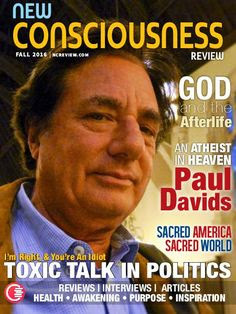





Published on September 12, 2016 02:12
September 11, 2016
‘Mia Madre’ muses about the nature of life and death
“Mia Madre” (“My Mother”) (2015 production, 2016 release). Cast: Margherita Buy, John Turturro, Giulia Lazzarini, Nanni Moretti, Beatrice Mancini, Stefano Abbati, Enrico Ianniello. Director: Nanni Moretti. Screenplay: Nanni Moretti, Francesco Piccolo and Valia Santella. Story: Nanni Moretti, Valia Santella, Gaia Manzini and Chiara Valerio. Web site. Trailer.
Coping with the impending death of a loved one presents each of us with a unique challenge. How do we respond? Do we approach it directly, seeing circumstances for what they are? Or do we hold out hope against hope, running the risk of drowning in denial? What’s more, what impact does such an event have on our outlook about our own mortality? Those are among the questions posed in the emotional new Italian comedy-drama, “Mia Madre” (“My Mother”).
Middle-aged filmmaker Margherita (Margherita Buy) and her brother, Giovanni (Nanni Moretti), are slowly watching their elderly mother, Ada (Giulia Lazzarini), die in a Rome hospital bed. Giovanni has taken a leave of absence from his job to address Ada’s many health care issues head on, while Margherita struggles to maintain a normal routine in between hospital visits. Margherita is wrestling with quite a full plate, too, given that she’s working on a new film with a popular but temperamental American actor, Barry Huggins (John Turturro), and preparing for a visit from her teenage daughter, Livia (Beatrice Mancini), and ex-husband, Federico (Stefano Abbati). But why is Margherita busying herself with such a loaded agenda? Is her attempt at doing it all some kind of statement about her competency and organizational skills? Or is she filling up her time in an effort to erect a façade that hides her feelings about what’s really happening?
 Middle-aged filmmaker Margherita (Margherita Buy, right) struggles to cope with the impending death of her elderly mother, Ada (Giulia Lazzarini, left), in the touching new comedy-drama, “Mia Madre” (“My Mother”). Photo courtesy of Music Box Films.
Middle-aged filmmaker Margherita (Margherita Buy, right) struggles to cope with the impending death of her elderly mother, Ada (Giulia Lazzarini, left), in the touching new comedy-drama, “Mia Madre” (“My Mother”). Photo courtesy of Music Box Films.
As Ada’s condition deteriorates, Margherita finds herself becoming embroiled in an array of distractions – some ridiculous, some pleasant, some troubling – including press conferences to promote her new film, the unpredictable antics of her leading man, her daughter’s pleas for a motorized scooter, the recent end of a failed relationship and an unusual, unexpected household incident. Some might view Margherita’s troubles as a case of “when it rains, it pours,” when, in fact, it’s more of a poorly veiled attempt at looking for ways to take her mind off things. But, no matter how much she tries to focus on addressing these diversions and other everyday affairs, the reality of her mother’s circumstances increasingly creeps into her consciousness. These thoughts become reinforced through her recollections of Ada (told through flashbacks), the impressions left by several disturbing dream sequences and bearing witness to her mother’s failing mental state, all of which serve to bring present circumstances front and center. They also compel Margherita to look at what she’s done with her own life and what the future might hold, realizations that force her into facing the fact that whatever transpires is all on her, something she doesn’t seem to have examined quite so profoundly until now.
Incidents like Ada’s demise are undoubtedly painful to witness. But they can also fulfill a valuable purpose by reminding us about some of the key qualities of our existence – its fragility, its fleeting nature and its potential for remarkable experiences. However, how many of us are truly cognizant of these traits on an ongoing basis? Do we glide aimlessly through life, losing sight of its precious gifts and taking them for granted? Do we become so preoccupied with the minutiae of daily life that we fail to see the big picture, to recognize or appreciate what our reality has to offer? Indeed, is our time so filled up with “stuff” that we require tragic experiences to snap us out of our complacency?
 Frustrated director Margherita (Margherita Buy, left) struggles to keep her wits about her when dealing with a popular but temperamental American actor, Barry Huggins (John Turturro, right), in filming her latest production in the touching new comedy-drama, “Mia Madre” (“My Mother”). Photo courtesy of Music Box Films.
Frustrated director Margherita (Margherita Buy, left) struggles to keep her wits about her when dealing with a popular but temperamental American actor, Barry Huggins (John Turturro, right), in filming her latest production in the touching new comedy-drama, “Mia Madre” (“My Mother”). Photo courtesy of Music Box Films.
Such developments give us pause to think about our reality, particularly what drives it. This is where the question of our beliefs comes into play, which is important, given that they provide the cornerstone of the conscious creation process, the means by which we manifest our existence.
The creations of the film’s principals reveal much about their beliefs. Margherita’s reality is very much a reflection of her conflicted views about her mother’s circumstances and her own outlook on life. It becomes apparent she’s been oblivious to many of them for a long time, wrapping herself up in her art and the details of everyday living rather than focusing on the meaning of life – her life – and what she wants out of it. It forces her to look at her personal dissatisfaction and to begin contemplating what she might want to do about it.
 Siblings Margherita (Margherita Buy, right) and Giovanni (Nanni Moretti, left) struggle with the impending death of their elderly mother in the new Italian comedy-drama, “Mia Madre” (“My Mother”). Photo courtesy of Music Box Films.
Siblings Margherita (Margherita Buy, right) and Giovanni (Nanni Moretti, left) struggle with the impending death of their elderly mother in the new Italian comedy-drama, “Mia Madre” (“My Mother”). Photo courtesy of Music Box Films.
Fortunately, Margherita has several good examples to draw from for inspiration. Her brother, for instance, is a paragon of responsibility, showing her what it means to forthrightly take charge of matters, both personally and with regard to those he cares about. Barry, meanwhile, despite all his unbridled foolishness, shows Margherita what it means to have fun, to not take life so seriously, especially when he reveals a serious and potentially career-crippling challenge of his own. But, most of all, there’s Ada, whose cheery, indomitable optimism about life, even in the face of an impending end, keeps her going, despite such trying conditions.
Margherita (and the rest of us, for that matter) would be wise to pay attention to these sources of motivation and encouragement, especially if life isn’t panning out as we’d like. By drawing upon these examples, we have an opportunity to rewrite our beliefs – and change our existence for the better. That’s crucial, especially while we still have the time to avail ourselves of such inspiration.
Though slow to start and occasionally uneven, “Mia Madre” presents an ambitious look at life, death and how we approach them, a story that gets progressively better the further one gets into the film. Excellent performances abound, with many scenes that are raucously funny and others that are sublimely touching. Be patient with screening this one; it takes a little time to develop, but the wait is worth it.
Death, as we all know, is an inevitability. But, until that time comes, so is life, and how we approach it is just as important as what we do as the end draws near. We can choose to view our existence as a sequence of situations that never quite measure up to expectations, or we can look upon it optimistically, with hope for tomorrow, even if that tomorrow never comes. As noted above, it all depends on us and what we do with our circumstances, a lesson we’d best learn while we still have the chance.
Copyright © 2016, by Brent Marchant. All rights reserved.
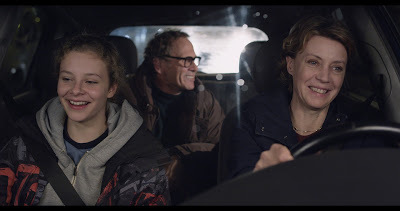 Middle-aged filmmaker Margherita (Margherita Buy, right) juggles a visit from her teenage daughter, Livia (Beatrice Mancini, left), and ex-husband, Federico (Stefano Abbati, background), while coping with the impending death of her elderly mother in the touching new comedy-drama, “Mia Madre” (“My Mother”). Photo courtesy of Music Box Films.
Middle-aged filmmaker Margherita (Margherita Buy, right) juggles a visit from her teenage daughter, Livia (Beatrice Mancini, left), and ex-husband, Federico (Stefano Abbati, background), while coping with the impending death of her elderly mother in the touching new comedy-drama, “Mia Madre” (“My Mother”). Photo courtesy of Music Box Films.
Coping with the impending death of a loved one presents each of us with a unique challenge. How do we respond? Do we approach it directly, seeing circumstances for what they are? Or do we hold out hope against hope, running the risk of drowning in denial? What’s more, what impact does such an event have on our outlook about our own mortality? Those are among the questions posed in the emotional new Italian comedy-drama, “Mia Madre” (“My Mother”).
Middle-aged filmmaker Margherita (Margherita Buy) and her brother, Giovanni (Nanni Moretti), are slowly watching their elderly mother, Ada (Giulia Lazzarini), die in a Rome hospital bed. Giovanni has taken a leave of absence from his job to address Ada’s many health care issues head on, while Margherita struggles to maintain a normal routine in between hospital visits. Margherita is wrestling with quite a full plate, too, given that she’s working on a new film with a popular but temperamental American actor, Barry Huggins (John Turturro), and preparing for a visit from her teenage daughter, Livia (Beatrice Mancini), and ex-husband, Federico (Stefano Abbati). But why is Margherita busying herself with such a loaded agenda? Is her attempt at doing it all some kind of statement about her competency and organizational skills? Or is she filling up her time in an effort to erect a façade that hides her feelings about what’s really happening?
 Middle-aged filmmaker Margherita (Margherita Buy, right) struggles to cope with the impending death of her elderly mother, Ada (Giulia Lazzarini, left), in the touching new comedy-drama, “Mia Madre” (“My Mother”). Photo courtesy of Music Box Films.
Middle-aged filmmaker Margherita (Margherita Buy, right) struggles to cope with the impending death of her elderly mother, Ada (Giulia Lazzarini, left), in the touching new comedy-drama, “Mia Madre” (“My Mother”). Photo courtesy of Music Box Films.As Ada’s condition deteriorates, Margherita finds herself becoming embroiled in an array of distractions – some ridiculous, some pleasant, some troubling – including press conferences to promote her new film, the unpredictable antics of her leading man, her daughter’s pleas for a motorized scooter, the recent end of a failed relationship and an unusual, unexpected household incident. Some might view Margherita’s troubles as a case of “when it rains, it pours,” when, in fact, it’s more of a poorly veiled attempt at looking for ways to take her mind off things. But, no matter how much she tries to focus on addressing these diversions and other everyday affairs, the reality of her mother’s circumstances increasingly creeps into her consciousness. These thoughts become reinforced through her recollections of Ada (told through flashbacks), the impressions left by several disturbing dream sequences and bearing witness to her mother’s failing mental state, all of which serve to bring present circumstances front and center. They also compel Margherita to look at what she’s done with her own life and what the future might hold, realizations that force her into facing the fact that whatever transpires is all on her, something she doesn’t seem to have examined quite so profoundly until now.
Incidents like Ada’s demise are undoubtedly painful to witness. But they can also fulfill a valuable purpose by reminding us about some of the key qualities of our existence – its fragility, its fleeting nature and its potential for remarkable experiences. However, how many of us are truly cognizant of these traits on an ongoing basis? Do we glide aimlessly through life, losing sight of its precious gifts and taking them for granted? Do we become so preoccupied with the minutiae of daily life that we fail to see the big picture, to recognize or appreciate what our reality has to offer? Indeed, is our time so filled up with “stuff” that we require tragic experiences to snap us out of our complacency?
 Frustrated director Margherita (Margherita Buy, left) struggles to keep her wits about her when dealing with a popular but temperamental American actor, Barry Huggins (John Turturro, right), in filming her latest production in the touching new comedy-drama, “Mia Madre” (“My Mother”). Photo courtesy of Music Box Films.
Frustrated director Margherita (Margherita Buy, left) struggles to keep her wits about her when dealing with a popular but temperamental American actor, Barry Huggins (John Turturro, right), in filming her latest production in the touching new comedy-drama, “Mia Madre” (“My Mother”). Photo courtesy of Music Box Films.Such developments give us pause to think about our reality, particularly what drives it. This is where the question of our beliefs comes into play, which is important, given that they provide the cornerstone of the conscious creation process, the means by which we manifest our existence.
The creations of the film’s principals reveal much about their beliefs. Margherita’s reality is very much a reflection of her conflicted views about her mother’s circumstances and her own outlook on life. It becomes apparent she’s been oblivious to many of them for a long time, wrapping herself up in her art and the details of everyday living rather than focusing on the meaning of life – her life – and what she wants out of it. It forces her to look at her personal dissatisfaction and to begin contemplating what she might want to do about it.
 Siblings Margherita (Margherita Buy, right) and Giovanni (Nanni Moretti, left) struggle with the impending death of their elderly mother in the new Italian comedy-drama, “Mia Madre” (“My Mother”). Photo courtesy of Music Box Films.
Siblings Margherita (Margherita Buy, right) and Giovanni (Nanni Moretti, left) struggle with the impending death of their elderly mother in the new Italian comedy-drama, “Mia Madre” (“My Mother”). Photo courtesy of Music Box Films.Fortunately, Margherita has several good examples to draw from for inspiration. Her brother, for instance, is a paragon of responsibility, showing her what it means to forthrightly take charge of matters, both personally and with regard to those he cares about. Barry, meanwhile, despite all his unbridled foolishness, shows Margherita what it means to have fun, to not take life so seriously, especially when he reveals a serious and potentially career-crippling challenge of his own. But, most of all, there’s Ada, whose cheery, indomitable optimism about life, even in the face of an impending end, keeps her going, despite such trying conditions.
Margherita (and the rest of us, for that matter) would be wise to pay attention to these sources of motivation and encouragement, especially if life isn’t panning out as we’d like. By drawing upon these examples, we have an opportunity to rewrite our beliefs – and change our existence for the better. That’s crucial, especially while we still have the time to avail ourselves of such inspiration.
Though slow to start and occasionally uneven, “Mia Madre” presents an ambitious look at life, death and how we approach them, a story that gets progressively better the further one gets into the film. Excellent performances abound, with many scenes that are raucously funny and others that are sublimely touching. Be patient with screening this one; it takes a little time to develop, but the wait is worth it.
Death, as we all know, is an inevitability. But, until that time comes, so is life, and how we approach it is just as important as what we do as the end draws near. We can choose to view our existence as a sequence of situations that never quite measure up to expectations, or we can look upon it optimistically, with hope for tomorrow, even if that tomorrow never comes. As noted above, it all depends on us and what we do with our circumstances, a lesson we’d best learn while we still have the chance.
Copyright © 2016, by Brent Marchant. All rights reserved.
 Middle-aged filmmaker Margherita (Margherita Buy, right) juggles a visit from her teenage daughter, Livia (Beatrice Mancini, left), and ex-husband, Federico (Stefano Abbati, background), while coping with the impending death of her elderly mother in the touching new comedy-drama, “Mia Madre” (“My Mother”). Photo courtesy of Music Box Films.
Middle-aged filmmaker Margherita (Margherita Buy, right) juggles a visit from her teenage daughter, Livia (Beatrice Mancini, left), and ex-husband, Federico (Stefano Abbati, background), while coping with the impending death of her elderly mother in the touching new comedy-drama, “Mia Madre” (“My Mother”). Photo courtesy of Music Box Films.
Published on September 11, 2016 23:49
September 7, 2016
This Week in Movies with Meaning
Reviews of "Mia Madre," "A Tale of Love and Darkness" and "The Square" are all in the latest Movies with Meaning post on the Blog Page of The Good Radio Network, available by clicking here.
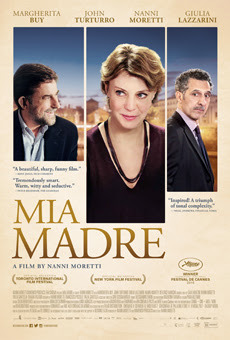
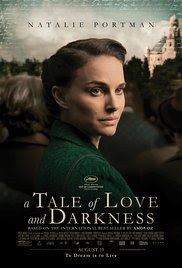
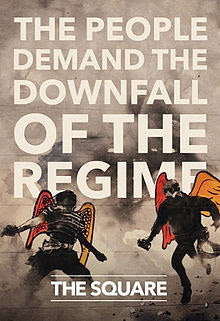





Published on September 07, 2016 04:23
August 31, 2016
‘Lo and Behold’ dissects the joys – and challenges – of connectedness
“Lo and Behold, Reveries of the Connected World” (2016). Cast: Elon Musk, Dr. Leon Kleinrock, Danny Hillis, Kevin Mitnick, Sebastian Thrun, Lawrence Krauss, Lucianne Walkowicz, Jonathan Zittrain, Shawn Carpenter, Werner Herzog (narrator). Director: Werner Herzog. Screenplay: Werner Herzog. Web site. Trailer.
It’s almost inconceivable to think of life without the Internet. As if out of nowhere, this remarkable technology quietly emerged from modest beginnings and proceeded to explode, revolutionizing the world in countless ways – as well as in countless ways we have yet to imagine. But, given how unexpectedly this remarkable phenomenon arose, not to mention how it has come to so completely dominate many aspects of our lives, are we fully aware of its current influence and potential future impact? Do its benefits blind us to its pitfalls? And what does that mean for the future? Those ideas are among the many raised in director Werner Herzog’s thoughtful new documentary, “Lo and Behold, Reveries of the Connected World.”
Making a film about a subject as overarching as the Internet is no small task. The sheer volume of material available for possible inclusion is itself overwhelming. There’s so much to cover that it’s impossible to believe any one picture could do it justice.
Given that, Herzog wisely chose not to address all facets of this potentially unwieldy subject through this project. Rather, he selected a handful of relevant topics, illustrating them with specific examples. This material is effectively complemented by interview segments with such experts as entrepreneur Elon Musk, Internet pioneer Dr. Leon Kleinrock, computer scientist Danny Hillis, former hacker Kevin Mitnick, educator and robotics expert Sebastian Thrun, visionary physicist Lawrence Krauss, Internet law professor Jonathan Zittrain, cyberespionage expert Shawn Carpenter, and astronomer Lucianne Walkowicz, among others.
Among the topics covered in the film are the Internet’s origins and its future, as well as a number of key questions about its current and evolving character. Through the picture’s various examples, Herzog examines such net-inspired innovations as virtually instantaneous universal connectivity, technological wonders in areas as diverse as robotics, smart phones and self-driving cars, and the capacity for unfettered global participatory problem-solving. By contrast, the film then depicts the darker side of the electronic world, such as its potential to inflict devastating emotional harm, the debilitating impact of some forms of wireless technology on physical and psychological health, and the implementation of web-based platforms and hacking programs for intentionally wreaking economic, social and political chaos. The film also explores a number of pending developments, such as Internet-based applications for use in space exploration and interplanetary colonization, brain mapping, and even the creation of highly personalized residential units incorporating “the Internet of Me.”
 Internet pioneer Dr. Leonard Kleinrock is one of the featured interview subjects in director Werner Herzog’s latest documentary, “Lo and Behold, Reveries of the Connected World.” Photo courtesy of Magnolia Pictures.
Internet pioneer Dr. Leonard Kleinrock is one of the featured interview subjects in director Werner Herzog’s latest documentary, “Lo and Behold, Reveries of the Connected World.” Photo courtesy of Magnolia Pictures.
But, as becomes apparent in the film, what ultimately happens with the Internet and related technologies depends not so much on hardware and software but on what we do with it, considerations driven more by human nature than by microchips and algorithmic protocols. Of course, as the technology evolves, so, too, is human nature, especially when we look at what electronics now make possible, capacities for creativity and productivity not previously envisioned, let alone capable of being deployed. And none of this takes into account the impact of what’s in the pipeline, developments whose influence can hardly be predicted at this point (if you doubt that, consider the fact that virtually every 20th Century futurist who speculated about the nature of life today never saw the Internet coming).
So what does all this mean? Essentially it’s a rallying cry that we choose carefully what we do with this amazing technology. That may be easier said than done, though, given the volume of new information that is being added to the Internet on a daily basis. As Herzog astutely points out, if we were to copy to CD all of the data that is being added to the web every day, the stack of disks containing it would extend from Earth to Mars. That’s 365 new interplanetary CD piles every year. That’s some serious food for thought – and a lot to digest.
For all of their pluses and minuses, though, at bottom, the Internet and its related technologies are fundamentally about fostering our links to one another. This is especially true in terms of how it helps promote our awareness of our intrinsic connectedness. As obvious as that might seem to some of us, for many it’s still a rather novel concept, a consequence of the persistence of a long-standing paradigm based on beliefs that we live in a compartmentalized reality, one that consists of a set of separate component parts. Fortunately, that skewed worldview is fading away, and a new sense of connection is emerging, with the Internet mirroring those sensibilities.
Those changes are occurring as a result of shifts in our collective beliefs, the cornerstone of the conscious creation process, the means by which we manifest the reality we experience. In a nutshell, the Internet and its related technologies are the centerpieces of those alterations in our thinking. It’s somewhat ironic that we should see this change reflected through a tangible expression of what is essentially an intangible technology, but the net nevertheless mimics this shift in our consciousness, and it does so quite effectively, almost poetically.
In a sense, the Internet embodies the philosophies of famed spiritualist Pierre Teilhard de Chardin, who believed in a concept known as the noosphere. According to Chardin, the noosphere is the realm of infinite consciousness that surrounds our world, a cosmic storehouse of limitless information, knowledge and wisdom capable of being tapped for the growth, development and evolution of the human species. But, at the time this idea was first postulated, our consciousness had not developed to a point where most of us knew how to access it. What’s more, as beings focused on experiencing a reality based on physicality, it was virtually impossible for us to conceive of how we could tap and make use of such an intangible resource. Clearly we needed some kind of “tool” to show us the way, and that’s where the Internet comes in.
Because of that, from a conscious creation standpoint, the net is as much a part of our species’ evolution as any biological changes we undergo. It’s playing a central role in the emergence of our sentience, our self-awareness and our understanding of our inherent connectedness. At some point, our proficiency in this regard may surpass our need for something like the web, but, for now, as our capacities continue to emerge and grow in sophistication, it’s the best we’ve got.
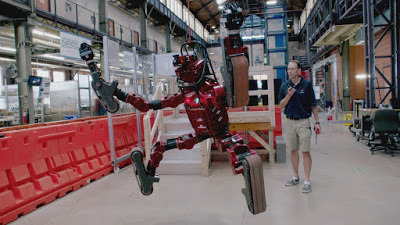 Thanks to advances in computer and cyber technology, researchers at Pittsburgh’s Carnegie Mellon University have begun engaging in studies involving advanced robotics, as depicted in the new documentary, “Lo and Behold, Reveries of the Connected World.” Photo courtesy of Magnolia Pictures.
Thanks to advances in computer and cyber technology, researchers at Pittsburgh’s Carnegie Mellon University have begun engaging in studies involving advanced robotics, as depicted in the new documentary, “Lo and Behold, Reveries of the Connected World.” Photo courtesy of Magnolia Pictures.
Understanding this is crucial to understanding why the Internet has evolved as it has. One might legitimately wonder, for example, why does it have both negative and positive attributes? If it’s something that’s supposedly so great, then why is it also afflicted by such problems as computer viruses, identity theft scams and the perpetuation of hate speech? Couldn’t we have done a better job in what we’ve created?
These are good questions. But, because the Internet is a tangible expression of our collective intangible beliefs, it’s naturally going to reflect the entire spectrum of that mass consciousness, for better or worse. Thanks to conscious creation, which makes all expressions of existence possible, that all-encompassing inclusivity will, of necessity, be reflected in the end result.
However, that’s not to suggest that we’re irretrievably stuck with those circumstances. As in any conscious creation scenario, what we do in collectively creating the cyber world will mirror whatever thoughts, beliefs and intents we put forth. If we don’t like what we’ve created, then it’s time to go back and assess what brought it into being in that undesirable form, tweaking what it takes to yield a more satisfactory result.
Even though the Internet has been around since 1969, and given the many advances that have occurred in that time, we might be tempted to give ourselves a hearty self-congratulatory pat on the back. But, despite these developments, the technology is nevertheless in its infancy. We’re still becoming conscious of what it is, what it can do and what we should do with it. If we like what we’ve created, that’s great. And, if we believe it’s in need of change, then we need to take that into account going forward, too, infusing our manifestation efforts with the metaphysical means that support a desired outcome.
Though occasionally uneven, “Lo and Behold” is a fascinating documentary about what is arguably one of the most transformative inventions in human history. The bulk of the segments make their cases clearly and succinctly, though a few of them receive less attention than others, and one in particular, in my opinion, suffers from an undermining credibility issue. There’s also a slight tendency to succumb to inadequately explained computer jargon, leaving the technically uninitiated in the dark. Nevertheless, there’s a lot to like here. Geeks will assuredly adore the film, but even casual users of this technology will likely come away with an enlightened perspective.
 Filmmaker Werner Herzog presents an intriguing, example-based look at the Internet in the engaging new documentary, “Lo and Behold, Reveries of the Connected World.” Photo courtesy of Magnolia Pictures.
Filmmaker Werner Herzog presents an intriguing, example-based look at the Internet in the engaging new documentary, “Lo and Behold, Reveries of the Connected World.” Photo courtesy of Magnolia Pictures.
When the first telegraph message was sent in 1844, inventor Samuel F.B. Morse transmitted the Biblical quote “What hath God wrought” as the first words to be conveyed by this then-radical technology, an appropriate tribute to the power of creation. Ironically, when the Internet was launched 125 years later, the first email message successfully sent echoed this sentiment, even though it was actually a truncated version of what was supposed to be transmitted. When UCLA researchers were writing their Stanford colleagues, in line with the technology’s transmission protocol, they began their message by intending to type in the word “login.” But no sooner did they begin when the receiving computer crashed. Rather than sending the intended word, the UCLA team instead sent only the word “lo.”
How fitting! It’s as if the net’s creators somehow knew – even if only subconsciously – that they were unleashing something astonishing into the world, that their one-word message captured the awe associated with the experience and what would come from it. And that was just the beginning. What came from it since then – and what’s likely to come from it in the future – can hardly be put into words. But, in the end, what really matters is what thought we put into it, especially as our sentience and awareness of our connectedness grow, develop and evolve. As that happens, we can only imagine what will emerge – and what we can do with that to create a better, more harmonious world.
Copyright © 2016, by Brent Marchant. All rights reserved.
It’s almost inconceivable to think of life without the Internet. As if out of nowhere, this remarkable technology quietly emerged from modest beginnings and proceeded to explode, revolutionizing the world in countless ways – as well as in countless ways we have yet to imagine. But, given how unexpectedly this remarkable phenomenon arose, not to mention how it has come to so completely dominate many aspects of our lives, are we fully aware of its current influence and potential future impact? Do its benefits blind us to its pitfalls? And what does that mean for the future? Those ideas are among the many raised in director Werner Herzog’s thoughtful new documentary, “Lo and Behold, Reveries of the Connected World.”
Making a film about a subject as overarching as the Internet is no small task. The sheer volume of material available for possible inclusion is itself overwhelming. There’s so much to cover that it’s impossible to believe any one picture could do it justice.
Given that, Herzog wisely chose not to address all facets of this potentially unwieldy subject through this project. Rather, he selected a handful of relevant topics, illustrating them with specific examples. This material is effectively complemented by interview segments with such experts as entrepreneur Elon Musk, Internet pioneer Dr. Leon Kleinrock, computer scientist Danny Hillis, former hacker Kevin Mitnick, educator and robotics expert Sebastian Thrun, visionary physicist Lawrence Krauss, Internet law professor Jonathan Zittrain, cyberespionage expert Shawn Carpenter, and astronomer Lucianne Walkowicz, among others.
Among the topics covered in the film are the Internet’s origins and its future, as well as a number of key questions about its current and evolving character. Through the picture’s various examples, Herzog examines such net-inspired innovations as virtually instantaneous universal connectivity, technological wonders in areas as diverse as robotics, smart phones and self-driving cars, and the capacity for unfettered global participatory problem-solving. By contrast, the film then depicts the darker side of the electronic world, such as its potential to inflict devastating emotional harm, the debilitating impact of some forms of wireless technology on physical and psychological health, and the implementation of web-based platforms and hacking programs for intentionally wreaking economic, social and political chaos. The film also explores a number of pending developments, such as Internet-based applications for use in space exploration and interplanetary colonization, brain mapping, and even the creation of highly personalized residential units incorporating “the Internet of Me.”
 Internet pioneer Dr. Leonard Kleinrock is one of the featured interview subjects in director Werner Herzog’s latest documentary, “Lo and Behold, Reveries of the Connected World.” Photo courtesy of Magnolia Pictures.
Internet pioneer Dr. Leonard Kleinrock is one of the featured interview subjects in director Werner Herzog’s latest documentary, “Lo and Behold, Reveries of the Connected World.” Photo courtesy of Magnolia Pictures.But, as becomes apparent in the film, what ultimately happens with the Internet and related technologies depends not so much on hardware and software but on what we do with it, considerations driven more by human nature than by microchips and algorithmic protocols. Of course, as the technology evolves, so, too, is human nature, especially when we look at what electronics now make possible, capacities for creativity and productivity not previously envisioned, let alone capable of being deployed. And none of this takes into account the impact of what’s in the pipeline, developments whose influence can hardly be predicted at this point (if you doubt that, consider the fact that virtually every 20th Century futurist who speculated about the nature of life today never saw the Internet coming).
So what does all this mean? Essentially it’s a rallying cry that we choose carefully what we do with this amazing technology. That may be easier said than done, though, given the volume of new information that is being added to the Internet on a daily basis. As Herzog astutely points out, if we were to copy to CD all of the data that is being added to the web every day, the stack of disks containing it would extend from Earth to Mars. That’s 365 new interplanetary CD piles every year. That’s some serious food for thought – and a lot to digest.
For all of their pluses and minuses, though, at bottom, the Internet and its related technologies are fundamentally about fostering our links to one another. This is especially true in terms of how it helps promote our awareness of our intrinsic connectedness. As obvious as that might seem to some of us, for many it’s still a rather novel concept, a consequence of the persistence of a long-standing paradigm based on beliefs that we live in a compartmentalized reality, one that consists of a set of separate component parts. Fortunately, that skewed worldview is fading away, and a new sense of connection is emerging, with the Internet mirroring those sensibilities.
Those changes are occurring as a result of shifts in our collective beliefs, the cornerstone of the conscious creation process, the means by which we manifest the reality we experience. In a nutshell, the Internet and its related technologies are the centerpieces of those alterations in our thinking. It’s somewhat ironic that we should see this change reflected through a tangible expression of what is essentially an intangible technology, but the net nevertheless mimics this shift in our consciousness, and it does so quite effectively, almost poetically.
In a sense, the Internet embodies the philosophies of famed spiritualist Pierre Teilhard de Chardin, who believed in a concept known as the noosphere. According to Chardin, the noosphere is the realm of infinite consciousness that surrounds our world, a cosmic storehouse of limitless information, knowledge and wisdom capable of being tapped for the growth, development and evolution of the human species. But, at the time this idea was first postulated, our consciousness had not developed to a point where most of us knew how to access it. What’s more, as beings focused on experiencing a reality based on physicality, it was virtually impossible for us to conceive of how we could tap and make use of such an intangible resource. Clearly we needed some kind of “tool” to show us the way, and that’s where the Internet comes in.
Because of that, from a conscious creation standpoint, the net is as much a part of our species’ evolution as any biological changes we undergo. It’s playing a central role in the emergence of our sentience, our self-awareness and our understanding of our inherent connectedness. At some point, our proficiency in this regard may surpass our need for something like the web, but, for now, as our capacities continue to emerge and grow in sophistication, it’s the best we’ve got.
 Thanks to advances in computer and cyber technology, researchers at Pittsburgh’s Carnegie Mellon University have begun engaging in studies involving advanced robotics, as depicted in the new documentary, “Lo and Behold, Reveries of the Connected World.” Photo courtesy of Magnolia Pictures.
Thanks to advances in computer and cyber technology, researchers at Pittsburgh’s Carnegie Mellon University have begun engaging in studies involving advanced robotics, as depicted in the new documentary, “Lo and Behold, Reveries of the Connected World.” Photo courtesy of Magnolia Pictures.Understanding this is crucial to understanding why the Internet has evolved as it has. One might legitimately wonder, for example, why does it have both negative and positive attributes? If it’s something that’s supposedly so great, then why is it also afflicted by such problems as computer viruses, identity theft scams and the perpetuation of hate speech? Couldn’t we have done a better job in what we’ve created?
These are good questions. But, because the Internet is a tangible expression of our collective intangible beliefs, it’s naturally going to reflect the entire spectrum of that mass consciousness, for better or worse. Thanks to conscious creation, which makes all expressions of existence possible, that all-encompassing inclusivity will, of necessity, be reflected in the end result.
However, that’s not to suggest that we’re irretrievably stuck with those circumstances. As in any conscious creation scenario, what we do in collectively creating the cyber world will mirror whatever thoughts, beliefs and intents we put forth. If we don’t like what we’ve created, then it’s time to go back and assess what brought it into being in that undesirable form, tweaking what it takes to yield a more satisfactory result.
Even though the Internet has been around since 1969, and given the many advances that have occurred in that time, we might be tempted to give ourselves a hearty self-congratulatory pat on the back. But, despite these developments, the technology is nevertheless in its infancy. We’re still becoming conscious of what it is, what it can do and what we should do with it. If we like what we’ve created, that’s great. And, if we believe it’s in need of change, then we need to take that into account going forward, too, infusing our manifestation efforts with the metaphysical means that support a desired outcome.
Though occasionally uneven, “Lo and Behold” is a fascinating documentary about what is arguably one of the most transformative inventions in human history. The bulk of the segments make their cases clearly and succinctly, though a few of them receive less attention than others, and one in particular, in my opinion, suffers from an undermining credibility issue. There’s also a slight tendency to succumb to inadequately explained computer jargon, leaving the technically uninitiated in the dark. Nevertheless, there’s a lot to like here. Geeks will assuredly adore the film, but even casual users of this technology will likely come away with an enlightened perspective.
 Filmmaker Werner Herzog presents an intriguing, example-based look at the Internet in the engaging new documentary, “Lo and Behold, Reveries of the Connected World.” Photo courtesy of Magnolia Pictures.
Filmmaker Werner Herzog presents an intriguing, example-based look at the Internet in the engaging new documentary, “Lo and Behold, Reveries of the Connected World.” Photo courtesy of Magnolia Pictures.When the first telegraph message was sent in 1844, inventor Samuel F.B. Morse transmitted the Biblical quote “What hath God wrought” as the first words to be conveyed by this then-radical technology, an appropriate tribute to the power of creation. Ironically, when the Internet was launched 125 years later, the first email message successfully sent echoed this sentiment, even though it was actually a truncated version of what was supposed to be transmitted. When UCLA researchers were writing their Stanford colleagues, in line with the technology’s transmission protocol, they began their message by intending to type in the word “login.” But no sooner did they begin when the receiving computer crashed. Rather than sending the intended word, the UCLA team instead sent only the word “lo.”
How fitting! It’s as if the net’s creators somehow knew – even if only subconsciously – that they were unleashing something astonishing into the world, that their one-word message captured the awe associated with the experience and what would come from it. And that was just the beginning. What came from it since then – and what’s likely to come from it in the future – can hardly be put into words. But, in the end, what really matters is what thought we put into it, especially as our sentience and awareness of our connectedness grow, develop and evolve. As that happens, we can only imagine what will emerge – and what we can do with that to create a better, more harmonious world.
Copyright © 2016, by Brent Marchant. All rights reserved.
Published on August 31, 2016 02:38
August 30, 2016
This Week in Movies with Meaning
Reviews of "Lo and Behold, Reveries of the Connected World" and 11 home viewing options, along with a movie-related podcast link, are all in the latest Movies with Meaning post on the Blog Page of The Good Radio Network, available by clicking here.
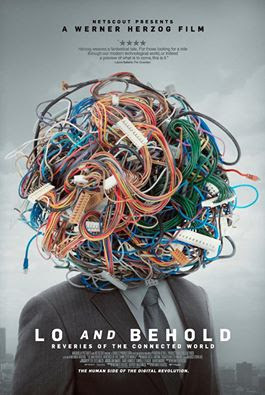
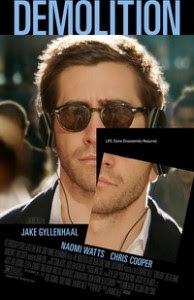
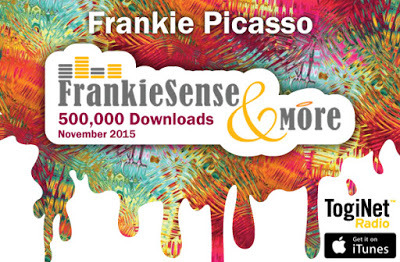





Published on August 30, 2016 00:10



